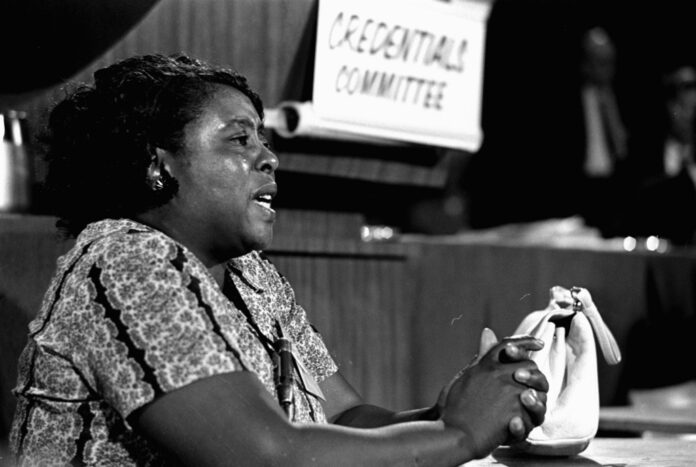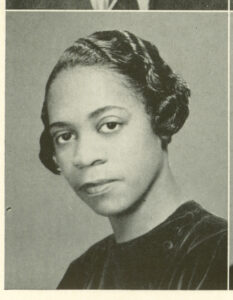
Women have long been at the forefront of gardening, whether passing agricultural traditions from generation to generation, organizing garden clubs and beautification societies, or — in some cases — making significant contributions to science and landscape design.
Some of these plantswomen gained notoriety for their work. Many are not as well known.
Here are several, in alphabetical order, who have left permanent marks on American horticultural history:
JANE COLDEN
In the 1750s, Colden became the first female American botanist. She is credited with naming and cataloging hundreds of native plants in the Hudson River Valley using Swedish botanist Carolus Linnaeus’ then-new binomial system of botanical nomenclature. Colden was the first in America to employ the system, which assigns a genus and species to each plant. She also was the first to describe and name the gardenia. Colden drew each of the plants she named, and compiled her detailed descriptions and illustrations into a manuscript, “Flora of New York.”
BEATRIX FARRAND
Known as the first lady of American landscape architecture, Farrand designed more than 100 gardens for private estates, public parks, college campuses, botanical gardens and even the White House’s East Garden during the Wilson presidency. In 1899, at age 27, the self-taught Farrand became the only woman among the founders of the American Society of Landscape Architects. And in 1912, when the field was still largely dominated by men, she was hired by Princeton University as its first consulting landscape architect, a position she held for 31 years.
FANNY LOU HAMER
A civil rights and agricultural activist, Hamer founded the Freedom Farm Cooperative in the late 1960s to provide land, livestock and vegetable-growing resources to poor Black families and farmers in Sunflower County, Mississippi. The Cooperative facilitated crop-sharing, self-reliance and financial independence. Participating families were also loaned a piglet to raise to maturity, after which they would return it for mating and give the cooperative two piglets from each litter to continue the program. “If you have a pig in your backyard, if you have some vegetables in your garden, you can feed yourself and your family, and nobody can push you around,” Hamer said. Her Cooperative became one of the earliest examples of modern community gardening and a precursor of today’s food justice movement.
CLAUDIA ‘LADY BIRD’ JOHNSON
First lady from 1963 to 1969, Johnson was an environmentalist and early native plants proponent who advocated for preserving wild spaces. She led the effort to secure the passage of the 1965 Highway Beautification Act during her husband’s presidency. The law sought to clear highways of billboards and to plant wildflowers along their shoulders to support plant and animal biodiversity and regional identity. Today, the Lady Bird Johnson Wildflower Center at the University of Texas at Austin honors her legacy.
CARRIE LIPPINCOTT
To contribute to her family’s income, Lippincott, of Minneapolis, started a seed business in 1886. Calling herself the “Pioneer Seedswoman of America,” she published the first seed catalog explicitly targeted to women, featuring a conversational introduction and illustrations of women, children and flowers at a time when other catalogs were simply text on paper. The pamphlet also was the first to specify the number of seeds included in each packet. The style and format revolutionized how seeds were sold, and were soon emulated by competing seed companies. Business bloomed, and soon, Miss C. H. Lippincott Flower Seeds was shipping seeds worldwide.
MARIE CLARK TAYLOR

In 1941, Taylor became the first Black woman to receive a doctorate in botany in the United States, and the first woman of any race to gain a Ph.D. in science from Fordham University. As an educator, she applied her doctoral research on the effect of light on plant growth to change the way high school science was taught. She encouraged the use of light microscopes and botanical materials in the classroom for the first time. In the mid-1960s, President Lyndon B. Johnson enlisted her to expand her teaching methods nationwide. Taylor also served as chair of Howard University’s Botany Department for nearly 30 years until her retirement in 1976.
WAHEENEE
Also known as Buffalo Bird Woman, Waheenee was a Hidatsa woman born around 1839 in what is now North Dakota. She mastered and shared centuries-old cultivating, planting and harvesting techniques with Gilbert L. Wilson, a minister and anthropologist who studied the tribe in the early 1900s. During visits that spanned 10 years, Wilson, whose work was sponsored by the American Museum of Natural History, transcribed Waheenee’s words with her son serving as interpreter. The resulting book, “Buffalo Bird Woman’s Garden: Agriculture of the Hidatsa Indians,” first published in 1917, documented the Hidatsa women’s methods for growing beans, corn, squash, sunflowers and tobacco, as well as the tools they used and their practices for drying and winter storage. Her advice is still relevant today.



